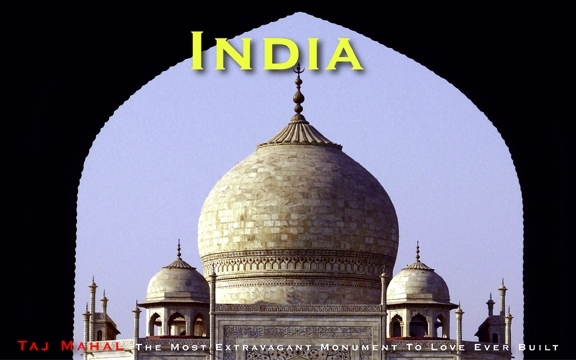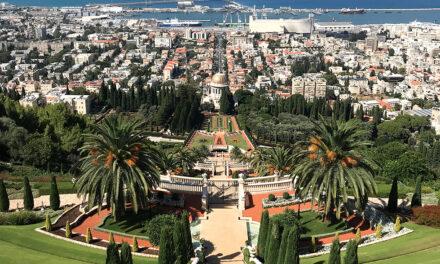India
Taj Mahal The Most Extravagant Monument To Love Ever Built
by Habeeb Salloum

Built as a monument to love, the Taj Mahal, the most famous of all India’s tourist attractions, on July 7, 2007 was voted by approximately 100 million people from around the globe, who cast their ballots by telephone and Internet, to be one of the ‘New Seven Wonders of the World’. It was a well-earned acclamation for unlike most of mankind’s other great structures it was not erected to satisfy religious fervour or the vanities of rulers. Rather this symbol of India’s sub-continent was constructed in honour to profess esteem, devotion and love.
Historians and travellers have, through the ages, considered it more than just a building or some significant event but a total experience. Said to be the product of the greatness and nobility of Islam in India, it is the most drawn, photographed and described building structure in the world.
For more than three and a half centuries it has stood as a reminder of Islamic medieval splendour. At the time the Puritans were erecting their log cabins in New England, the Indian Moghul Emperor, Shah Jahan was constructing his famous Taj Mahal.
During his reign Moghul civilization in India had reached its golden age and, everywhere, Indian cities were being embellished with palatial palaces. After his wife, Queen Arjumand Banu Begum, better known as Mumtaz Mahal (Chosen One of the Palace), died in 1631 while giving birth to their 14th child, Shah Jahan decided to immortalize her memory.
He had been smitten with Mumtaz’s extraordinary beauty at first sight and had married her for love in 1612 when she was 21. Through the years, he came to respect her intelligence and relied on her for support and advice in state affairs. His ardour and esteem for her never wavered until her dying day. Grief-stricken by Mumtaz’s death, he vowed to build her a memorial which would be the crown of palaces – surpassing in magnificence anything the world had ever witnessed.
Construction began in 1632 and the mausoleum was completed sometime in 1653. It took 20,000 craftsmen and labourers 21 years to build this exquisite work of art. Shah Jahan had ordered it to be constructed as delicate and graceful as his beloved wife and his wishes were more than fulfilled. His creation, described as the aesthetic epitome of Mogul civilization is to many of its admirers the greatest love story ever told.
Situated on the southern bank of the Jumna River where it can be seen like an extraordinary mirage from the nearby Agra Fort, it is a moon-white fantasy in marble which becomes indelibly etched on the retina of every visitor’s eyes. From its enormous 30 m (100 ft) high colossal three-storey marble gateway inscribed with verses from the Koran, the Taj Mahal opens up like an overflowing jewel box.
Inside, the mausoleum, topped with a massive dome rising 24 m (80 ft) over its roof, is hidden by large trees and geometrically arranged manicured gardens covering some 17 ha (42 ac). Its reflecting pool edged by cypresses catches the glittering images on the tomb, casting a magic spell on most onlookers.
The shrine, located on a 29 sq m (313 sq ft) marble platform of a black and white chessboard design, is caged by two buildings of red sandstone – one a mosque and the other a replica of a mosque flanked by four dainty and slender 42 m (138 ft) minarets, standing on each corner of the platform. A jewelled mosaics and marble screen of latticework, as intricate as lace, surrounds the beautifully inlaid marble burial place which houses the crypts of both Mumtaz Mahal and Shah Jahan.
The smell of sandalwood and jasmine incense pervades the interior and this aroma intertwined with the all-encompassing beauty spellbinds a visitor. Said to be the most marvellous memorial to anyone on the globe, it enshrines forever the splendour and glory of Moghul structures. Shah Jahan wanted to build, on the opposite bank of the Jumna, his own tomb in black marble as a facsimile of the Taj. This was to be connected with that of his beloved queen with a bridge, but it was not to be.
In 1658, five years after Taj Mahal was completed, he was overthrown by his own son, Aurangzeb, and incarcerated in the Red Fort of Agra. His only consolation was that he could look from one of the Fort’s windows on his masterpiece, the Taj Mahal. During the ensuing years of confinement he never became reconciled to Mumtaz’s loss and in 1666, 36 years after his wife had passed away, he died, still in prison it is said while gazing at the reflection of his beloved wife’s white and noble Taj, across the river. He was laid to rest by the only woman he had ever loved.
Until our times, this architectural marvel, declared by UNESCO as a building of outstanding universal value, has inspired poets and writers. Many of the some 10 million annual tourists like to view it in the early morning when the first pale rays of the sun give a soft sultry lustre to the marble, twinkling in a coat of blue, mauve and pink. However, at any time of the day or night it is a breath-taking structure. It alters in appearance, colour and character with every shift of sunlight – blinding white at noon, mellowing at dusk and a deathly blue-white at night. One can truly say, “It is a tomb-palace like no other.


















